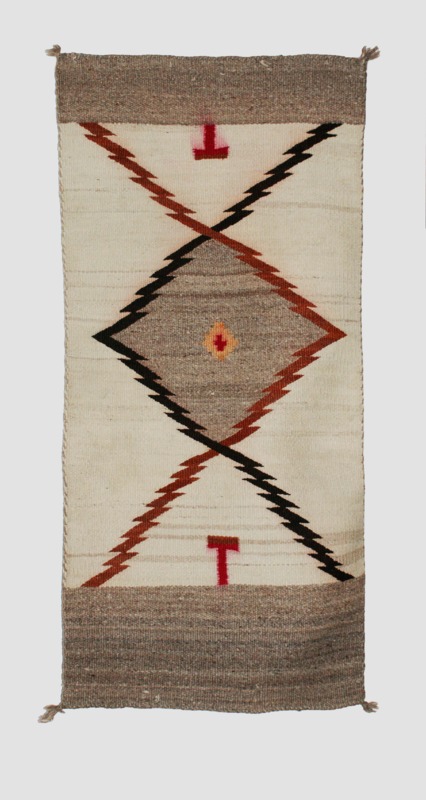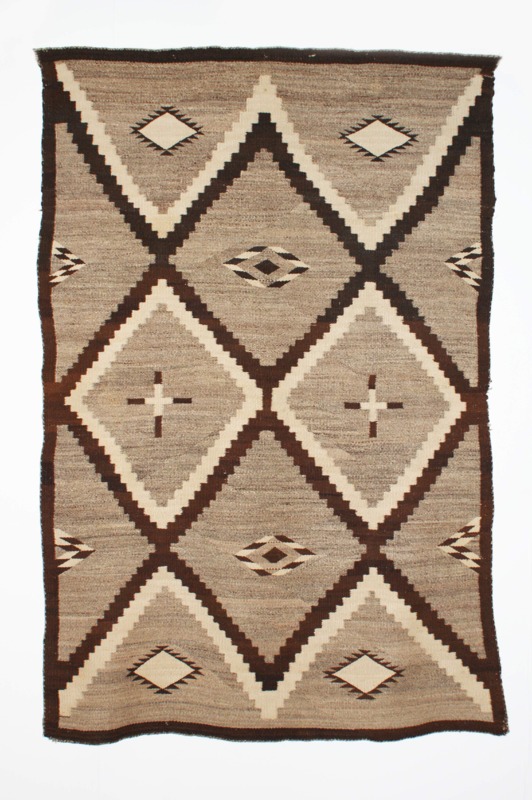Navajo Textile Art
Woven wool textiles, like those exhibited here, have become one of the most widely recognized signs of Navajo culture. Such weaving is a distinctly Navajo art but it was influenced by two older traditions as well as by non-Navajo buyers, past and present.
The indigenous Pueblo peoples taught the Navajo the weaving of cotton on upright looms. Another key influence came from the Spanish colonists—the source of sheep and the husbandry practices associated with them. While spinning and weaving thus connected the Navajo people to their neighbors, they have made weaving into a unique and highly valued art. Though women have constituted the majority of Navajo weavers, the historical and present-day art includes several prominent male weavers.
An 18th and 19th century Navajo weaving style produced textiles known as Chief’s Blankets. This name was attached to them because they were valued as blankets, which were worn as garments by leaders among the Native American peoples on the Great Plains. When railroads reached Navajoland in the 1880s and factory-made blankets flooded the West, Navajo weavers shifted their practice, producing rugs for sale to non-Native buyers through trading posts and other outlets.
The trading post operators encouraged Navajo weavers to develop distinctive local styles that appealed to European-American tastes while also retaining elements such as symmetry of geometric designs—which embodied the Navajo concepts of balance and harmony. This balancing of Navajo aesthetics and those of non-Native traders and consumers has shaped the ongoing dialogue over what constitutes a beautiful Navajo-woven textile.

